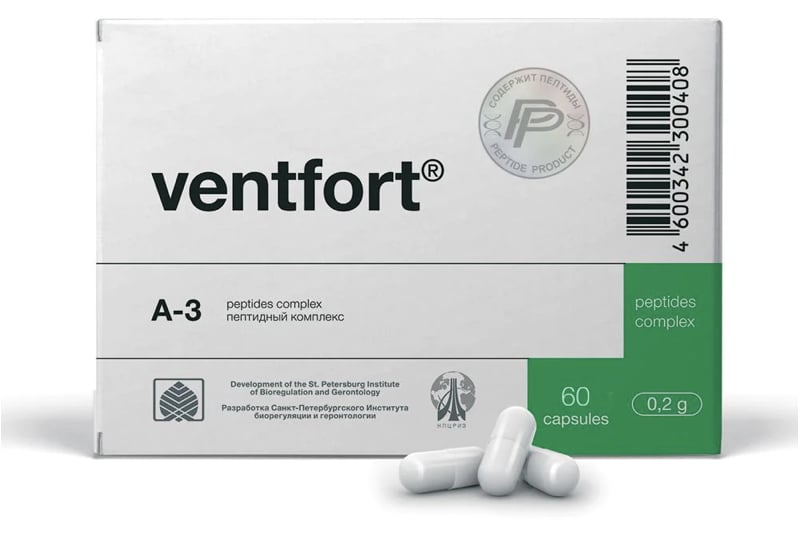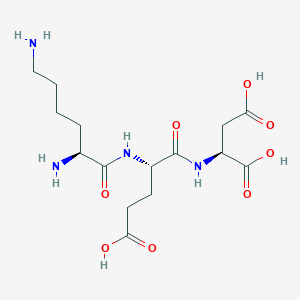After my groundbreaking podcast about peptide bioregulators with Phil Micans, Vice-President of International Antiaging Systems (IAS), this class of Golden Age compounds can no longer be ignored.
Which is why I’m going to start promoting them more regularly.
And the best way to kick this series of articles off is with the blood vessel peptide bioregulator Ventfort.
Both Phil and Dr. Vladmir Khavinson (the man who discovered peptide bioregulators) agree that Ventfort is one of the most versatile bioregulators around.
Not only does it synergistically work well with other peptide bioregulators, but Ventfort can also be used to treat almost any disease state and therefore lower mortality.
Kidneys, thyroid, liver, retina, testicles, immune system, anemia & anaemia, prostate, brain, adrenals, digestion, reproduction… there isn’t a single organ or bodily process Ventfort won’t directly impact and improve.
Keep reading and you’ll see why this “blood flow” bioregulator is worth the hype!
NOTE: I highly recommend you read my introductory article on peptide bioregulators first in order to get yourself caught up to speed.
And in case you happened to miss my podcast with Phil Micans, you can watch it below:
What Is Ventfort?
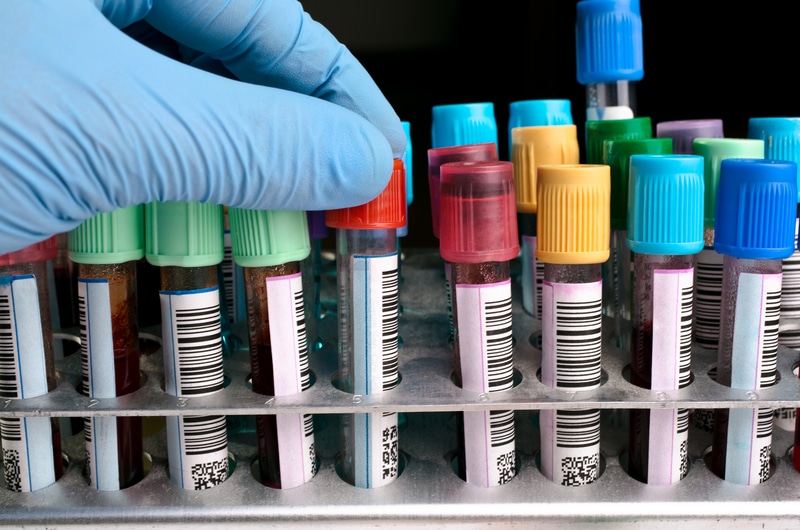
According to the official IAS website, Ventfort is “a complex of low-molecular peptides with molecular weight up to 10000 Da, isolated from the vascular (aorta) tissue of young animals – calves aged up to 12 months… manufactured in the form of tablets or capsules with a content of active substances 10 mg”
Or put more simply, we have a dietary supplement consisting of a natural peptide complex extracted from the blood vessel walls of healthy less-than-a-year-old bovines (cows, bison, buffalo, oxen, etc.).
If you did what I told you at the start of the article and read the 101 on peptide bioregulators, you would know that Ventfort therefore falls under the peptide bioregulator category of “Cytomaxes”.
And since bioregulators have a very unique property of specifically acting on the cells of the tissues they were extracted from, you can take a good guess at what Ventfort does.
From the must-read book The Peptide Bioregulator Revolution:
“… [Ventfort] aims to improve general circulation and restore arterial and venous health.
It increases the flow of blood in the blood vessels and may help in conditions such as high blood pressure, varicose veins, hemorrhoids, thrombophlebitis and thrombosis, intermittent claudication, and general circulation problems.”
As you can imagine, this simple act of directly improving blood flow necessarily means Ventfort has other related yet essential functions:
- Dilates blood vessels
- Repairs and strengthens the structure and function of blood vessels regardless of size, thereby optimizing the body’s cardiovascular system
- Increases blood vessel permeability
- Regulates cholesterol and lipoprotein content within the bloodstream
- Normalizes metabolic processes within the vascular cell walls, allowing for better intake and usage of oxygen and nutrients (while also transporting both sources of bodily nourishment to all other cells in the body)
- Stimulates protein synthesis
Given how inter-connected the cardiovascular system is to many of the body’s biological processes, Ventfort can be used to treat – if not prevent – a wide diversity of health problems:
- Hypertension (i.e. high blood pressure)
- Varicose veins
- Cerebrovascular disease (i.e. lack of sufficient blood flow and/or poor blood circulation within the brain that leads to strokes, aneurysms, etc.)
- Cardiovascular/circulatory issues such as obliterating endarteritis, encephalopathy, coronary artery disease, cold extremities, tinnitus, hearing problems, vision, etc.
- Skin metabolism
- Hemorrhoids
- Vascular atherosclerosis, especially in the lower extremities
- Recovery after myocardial infarction
- Prolonged situations of chronic stress
- Hypercholesterolemia (i.e. dangerously high cholesterol levels)
- Angiopathy (disease of the blood vessels), regardless of origin
Overall, Ventfort helps to restore and improve the performance of your body’s cardiovascular system, which in turn will improve blood supply to every organ and tissue… a necessity for fully optimized health.
It wouldn’t come as a shock to me if Ventfort could help already-healthy people perform better in the gym and feel more energetic all around!
Ventfort vs. Vesugen: What’s The Difference?
This is an extra section I had to put in because people often mistake Ventfort for another highly similar product called Vesugen.
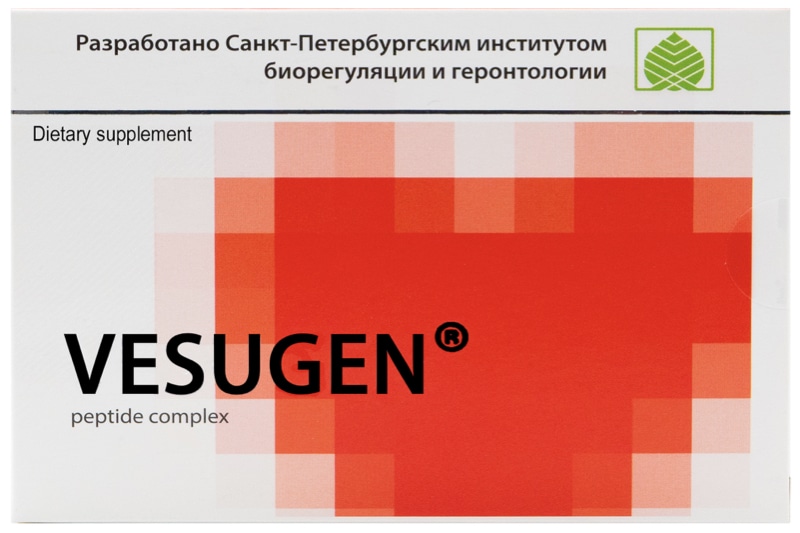
Vesugen is simply a synthetic version of Ventfort in which the latter’s “active center”, a short peptide spanning 3 amino acids (i.e. a tripeptide), is extracted from the Ventfort preparation itself.
This puts Vesugen in the class of Cytogens (you read my first peptide bioregulator article already, right?), meaning it has unique properties separate from the class of Cytomaxes.
International Antiaging Systems explains the differences in greater detail:
“…In terms of effectiveness, these short peptides are superior to preparations based on extracts, act in minimal dosages without causing any side effects. This class of bioregulators has no analogues in the world’s practice.
The difference between the synthesized peptide bioregulators (Cytogens) over the natural peptide bioregulators (Cytomax’s) is the Cytogens are faster acting at the initial stages, however their effects do not last as long as the natural Cytomax’s who generally can take longer to act, but last much longer.
Therefore, it is recommended to kick-start your program with the synthetic Cytogens before swiftly moving over to the natural Cytomax equivalent.”
(Which means you would start with Vesugen first and then transition over to Ventfort)
The three amino acids making up Vesugen are Lysine (Lys, K), Glutamine (Glu, E), and Asparagine (Asp, D):
(Source)
So once more… Cytomaxes consist of a mixture of several peptides (usually smaller than 50 amino acids in length), whereas Cytogens consist of only one peptide molecule.
To make your purchasing decision easier, always look out for the ingredients list.
The inactive excipients in both Vestugen and Ventfort will be the same (microcrystalline cellulose, lactose, etc.)
However… the active substance in Ventfort is “Peptide complex A-3” whereas the active substance in Vesugen is “Peptide complex AC-2”.
How Does Ventfort Work?
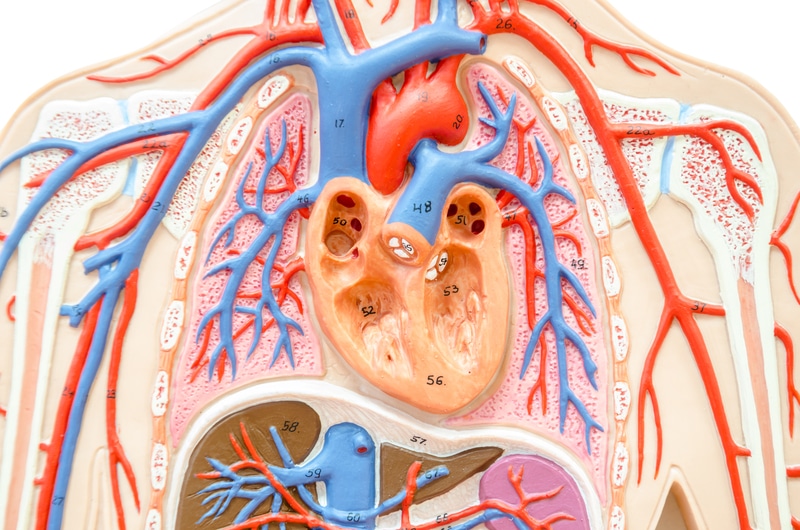
If you try to look up Ventfort’s mechanism of action on PubMed, you’re only going to find a total of ~30 studies published between 2008 and the present day.
This makes sense given the majority of research on this peptide bioregulator is Russian and unavailable to us North Americans.
The only way I could find any clinical research on Ventfort was to look up terms such as “Vesugen”, “KED”, and “tripeptide T-38” to gather as many papers as I could.
But given the active tripeptide within Ventfort is what allows it to confer its benefits towards the cardiovascular system, and therefore Vesugen as an extension, this ultimately makes sense.
So how does Ventfort work in the human body?
Via the tripeptide, Ventfort selectively upregulates and downregulates certain genes in a way that stops plaque buildup and promotes repair:
“One of the proposed mechanisms of the biological activity of this tripeptide is the epigenetic regulation of genes encoding proteins of the antioxidant system and endothelial functional activity.
The study of the KED [a.k.a. Vesugen] effect on the expression of signaling molecules in normal, atherosclerotic, and restenotic endothelium in vitro demonstrated that KED normalized the expression of endothelin-1, which increases in atherosclerosis and restenosis. The KED peptide also contributed to the cell-to-cell cooperation by increasing the expression of connexin, the cell junction protein.
It has been established that the geroprotective effect of the KED peptide occurred due to an increase in the expression of SIRT1, involved in the DNA repair”
In addition to lowering endothelin-1 expression and increasing SIRT1 expression, Ventfort also targets two additional protein markers:
“the clinical vasoprotective effects of tripeptide T-38 (normalization of lipid metabolism in patients with arterial atherosclerosis and improvement of hemodynamics) is related to its capacity to regulate the synthesis of Ki-67 and p53, the protein markers of cell renewal, and E-selectin, preventing platelet adhesion to the endothelium and formation of atherosclerotic plaques.
Since expression of these signaling molecules decreases during aging of the endothelium, we can hypothesize that T-38 can be useful in prevention of the development of atherosclerosis and CHD [coronary heart disease] in elder individuals.”
Going back to the first paper I quoted, what Ventfort ultimately does is prevent the death of blood vessel cells:
“…stimulation of endotheliocyte proliferation under the action of the KED peptide may indicate the ability of this tripeptide to prevent the development of atherosclerosis at its initial stage.
Thus, one of the most important molecular aspects of the vasoprotective action of the KED peptide is the regulation of processes of cell renewal and reduction of the level of endothelial apoptosis”
But there’s still one last question left unanswered in the midst of all this information…
Why is Blood Flow Important For Human Health?
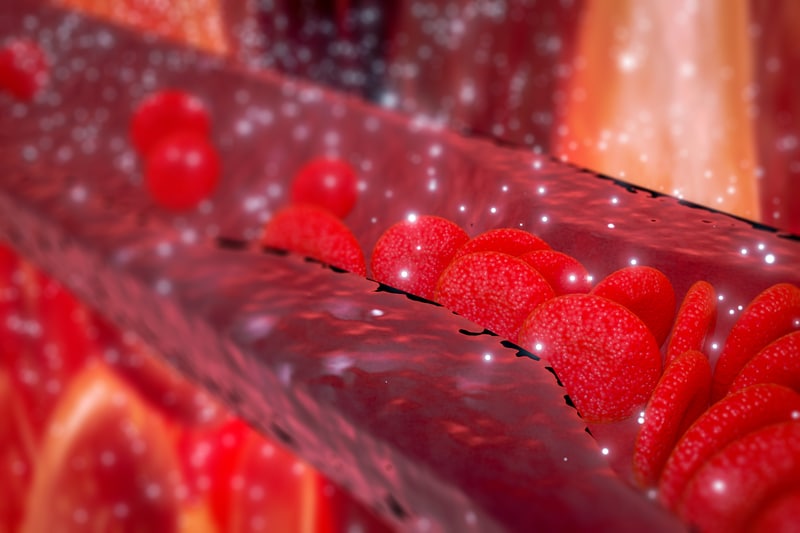
I’ve talked about the importance of blood flow in the context of regrowing your hair and increasing nitric oxide production, but never in regard to human health as a whole.
First, a brief overview of what blood flow does in the human body:
“Blood flow through the body delivers oxygen, nutrients, hormones, cells, products of defense mechanisms for wound healing, and platelets. The heart pumps these products to the organs, while the vessels transport them to and from the organs. Arteries perfuse the organs and veins drain the organs of waste products. The lymphatic system helps in draining excess tissue fluid to the bloodstream”
But where do blood vessels play a role?
It turns out the hormones being pumped through our circulatory system have a “vested interest” in getting to their destination as fast as possible.
This creates the need for a process where new blood vessels are generated and existing blood vessels are maintained:
“…the function of blood vessels depends on hormones that regulate blood pressure, blood coagulation, and inflammation. To favor hormone delivery or blood transport into growing tissues, hormones promote angiogenesis, the proliferation of new blood vessels from preexisting vasculature.
By acting systemically, hormones coordinate and integrate angiogenesis with other functions throughout the body.
They also regulate blood vessel growth by controlling the production of local chemical mediators, often other hormones, but also growth factors, cytokines, enzymes, receptors, adhesion molecules, and metabolic factors, by vascular endothelial cells and other cells within the vicinity of capillaries”
Similar to growth hormone, blood vessel formation is a critical part of our growth as children and our eventual maturity into fully-formed male and female adults.
So you can only imagine what happens when our body’s normal rate of angiogenesis is inhibited:
“[Disrupting angiogenesis] underlies the pathogenesis of a growing list of diseases characterized by the overproliferation of blood vessels, including cancer, psoriasis, arthritis, retinopathies, obesity, asthma, and atherosclerosis.
In addition, insufficient angiogenesis and abnormal vessel regression can lead to heart and brain ischemia, neurodegeneration, hypertension, osteoporosis, respiratory distress, preeclampsia, endometriosis, postpartum cardiomyopathy, and ovarian hyperstimulation syndrome”
But even if you strike lucky and don’t get any of the above, two factors will lead to reduced blood flow: Aging (a sure guarantee), and physical inactivity (something you have control over).
Multiple mechanisms are behind this gradual decline, such as lower total body water and slower speed of red blood cell production.
Hence why we need to do everything in our power to keep blood pumping through our body as vigorously and consistently as possible.
Ventfort Benefits

Like I previously said, the medical literature on Ventfort is scarce due to the majority of it being published in Russian journals I cannot access.
*NOTE* As I begin to drill down deeper into the AMAZING WORLD of bioregulators over the coming months, please understand there is volumes of published research on the health and safety of these biomolecules in Russia going back more than 40 years.
But within the few papers I was able to find written in English, there were two Ventfort benefits that stuck out to me most.
Heart Disease
The first study comes out of Chapter 3 in The Peptide Bioregulator Revolution, one I could not find on the Internet yet shows some promise as it involves human subjects:
“The vesugen preparation was tested in a group of 53 patients who had ischaemic heart disease and atherosclerosis with circulation problems. Their age was 50-82 years and the dose of 0.2 mg was taken orally twice a day for a month. This group was compared to a similar group of 345 patients who did not take the Vesugen treatment.
The results showed that the active treatment group reported fewer side episodes of angina, less cardiac arrhythmias and better sleep patterns. When used in addition to conventional antihypertensive treatment it reduced the frequency of hypertensive episodes, and also it reduced the levels of blood cholesterol and very low density lipoproteins (VLDL).”
The second study is published on the IAS website by Dr. Khavinson, which comes with far more data but unfortunately I could not find it on Pubmed or any online journal.
This happened between November 2003 till February 2004, showing that Ventfort is not just some brand new medical discovery:
“The subjects of the clinical studies were 49 patients with arterial atherosclerosis and senile purpura, 27 of them were the main group (15 men and 12 women) – they were additionally prescribed Ventfort® 10-15 minutes before meal, 1-2 capsules taken 2-3 times a day for 10-15 days depending on a degree of pathological process.
22 patients (11 men and 11 women) in the control group have been taking only general purpose medicines. The age of both groups of patients has made from 52 up to 84 years old “
Unlike the first study, we actually have some hard data on important health biomarkers in these diseased patients:
“Ventfort® administration has resulted in reliable decrease in the level of general blood cholesterol. There were also a tendency towards decrease in the content of very little density lipoproteins, being most atherogenic.
The patients with senile purpura after Ventfort® administration had an increase in strength of capillary walls according to the results of Hesse testing, the frequency of hemorrhages has decreased. In most patients the skin and hair condition has improved.”
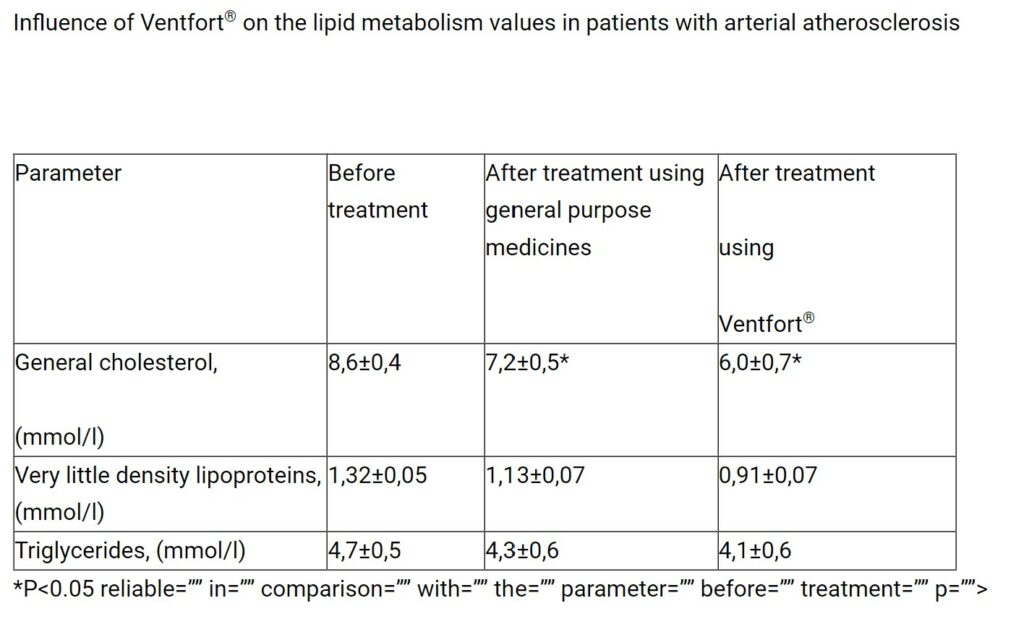
I also want to share this interesting testimonial from Reddit, which was the only one on the Internet I could find about using Ventfort in isolation:
“100% believer. I used ventfort to completely heal an obstructed blood vessel in the palm of my hand. Surgery was needed.
I took ventfort, 2 x 2 capsules/ day and it completely healed by itself after around 20 days. I continued using ventfort for 60 days, just to be sure. My doctor was completely flabbergasted”
Neuroprotection
The evidence for Ventfort’s cognitive effects is not as strong due to all of the studies being done in cells and mice.
At the same time they show potential and the conclusions of these studies make sense when you consider Ventfort’s effects on blood flow.
Ventfort stimulates the expression of the neurotransmitter serotonin in brain cortex cells, which some evidence (here and here) suggests can prevent neuronal damage and promote neurogenesis:
“…Lys-Glu-Asp stimulates serotonin expression in aging cultures of brain cortex cells. Peptide regulation of 5-tryptophan hydroxylase gene encoding the enzyme involved in serotonin synthesis was demonstrated by the molecular docking method.
…Lys-Glu-Asp peptide epigenetically regulates serotonin synthesis in the brain cortex, which indicates its neuro- and geroprotective activities.”
3 years later, an interesting in vitro study of mouse hippocampal neurons was done to determine if Ventfort could be a possible treatment and/or prevention route for Alzheimer’s Disease (AD).
Specifically, they wanted to see if the bioregulator could increase the number of dendritic spines produced given that they decrease in number within the early stages of Alzheimer’s:
“[Dendritic spines] represent specific processes on dendrites of hippocampal neurons that play a pivotal role in memory formation and learning. Spines are dynamic structures and therefore changes in their morphology are thought to reflect functional changes in the synaps]. For instance, mushroom spines that are stable postsynaptic contacts and are considered as “memory” spines are most rapidly eliminated in neurodegenerative diseases, including AD.”
While Ventfort wasn’t as good as the other peptide bioregulator it was pitted against, both peptides still delivered an impressive outcome:
“…peptide EDR (200 ng/ml) [the active ingredient in the bioregulator Pinealon] under conditions of amyloid synaptotoxicity (a model of Alzheimer’s disease) increased the number of mushroom spines by 71% and returned this parameter to the normal level.
Under the same conditions, tripeptide KED (200 ng/ml) increased the number of mushroom spines in hippocampal neurons by 20%.”
A 2021 study done in mice by Khavinson and his colleagues Dr. Khavinson was able to confirm these findings while further elucidating the mechanisms by which Ventfort may be able to hinder the development of Alzheimer’s:
“…the KED peptide affects the two levels of AD pathogenesis: neuronal loss and cerebral vessels endothelial dysfunction. The obtained results suggest that further research of EDR and KED peptides may be promising for developing a neuroprotective agent aimed at prevention and treatment of the early stage of AD.”
(Source)
All we need now are some additional animal studies and a few humans who can take part in a well-run clinical trial!
Ventfort Dosage
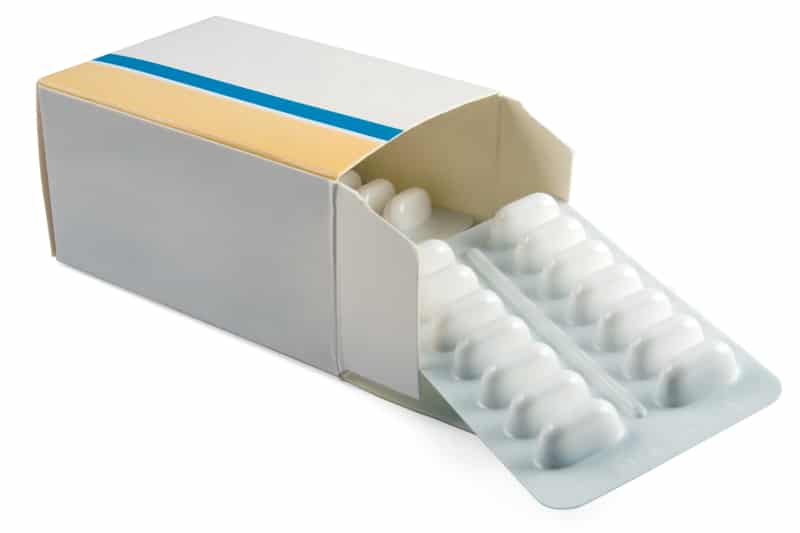
The best Ventfort dose doesn’t really “exist” because all of the Russian peptide bioregulators more-or-less follow the same dosing regimen.
From Chapter 4 in The Peptide Bioregulator Revolution:
“2 capsules a day [taken 15-30 minutes before each meal] for the first month (60 capsules total), this being the so-called intensive course, and then to repeat every 3 months at 2 capsules a day for 10 days (20 capsules). Thus, necesiciating a total of 120 capsules per year.”
However, the severity of the condition will always determine the dose strength and frequency.
In the case of treating high blood pressure, patients are advised to take 2 Ventfort capsules daily for the first month and then 2 capsules daily for 10 days in each successive month
NOTE: This is reduced to 2 capsules daily for 10 days every two, three, four, or six months if blood pressure readings consistently improve.
And for something more urgent like atherosclerosis, going as high as 2 capsules of Ventfort taken 3 times a day for a month is recommended.
I don’t have any information on Ventfort side effects, but here are some tips to ensure the safe use of this peptide bioregulator:
- Do NOT use Ventfort if you are pregnant or breastfeeding
- Store Ventfort in a cool, dark, dry place at room temperature away from direct sunlight
- Read the list of ingredients to see if you are allergic to anything within the capsule.
- Follow the dosing recommendations and do not try to “overdose” thinking you’ll get more health benefits.
How To Combine Ventfort With Therapeutic Peptides For Maximal Blood Flow

Here comes the fun part of the article: Taking Ventfort and using it alongside my favorite therapeutic peptides for accelerating your health to Level 10.
I have not personally tried these combinations but there’s no reason to think they aren’t based on sound science and ample amounts of anecdotal evidence.
Brain Health
While it’s smart to do everything in your power to stay mentally sharp at all ages, the hard reality is that cerebral blood flow (CBF) – how much blood is being supplied to your brain within a pre-defined unit of time – goes down with age, disease or not:
“Although CBF might remain unchanged or minimally diminished during normal aging, most studies found a gradual decline, ranging from 3.9 mL/min to 4.8 mL/min (0.52%) blood flow decline per year. An age-related CBF reduction occurs in the brain cortex (0.45% to 0.74% decline per year in gray matter) with only minimal changes in subcortical regions.
…Some studies have shown that this reduction might be due to progressive neuronal loss, diminished neuronal activity and decreased synaptic density of brain neurons”
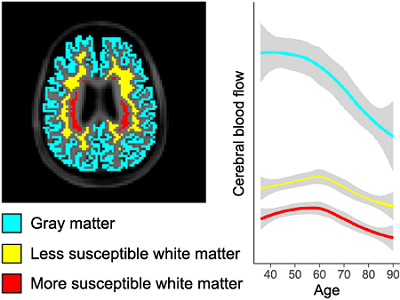
“Blood flow to the gray matter of the brain (blue) is higher than in white matter but reaches its peak at younger ages before decreasing.
White matter that is deeper in the brain (red) may be more susceptible to damage with aging because it receives lower blood flow than other white matter regions (yellow).” (SOURCE)
So what would be good nootropic peptides to combine with Ventfort?
Here’s my current stance since I AM a believer of “less is more” and it’s really easy to hit diminishing level of returns with cognition-enhancing peptides…
If you’re looking for a boost in overall mental performance (memory, attention, mood, etc.), pair Ventfort with Semax.
For those of you who aren’t seeking immediate effects and simply want the highest level of protection against neurodegenerative disease, Cerebrolysin would go really well with Ventfort.
Sexual Performance
I didn’t mention a specific 2014 study in previous sections of this article because I couldn’t find the translation, but it turns out Ventfort’s blood flow improving properties could work below the belt.
Here’s the abstract of that study:
“The objective of the study was to assess the effectiveness of vasoactive tripeptide Vezugen in patients with vasculogenic erectile dysfunction as manifestation of atherosclerosis.
Treatment results of erectile dysfunction in 41 patients were studied. A comparative analysis of clinical and instrumental parameters of blood flow in the main penile arteries before and after monotherapy was undertaken.
The results show that the blood flow through the main artery of the penis after Vezugen treatment significantly improved both clinical and by objective indicators.”
It goes without saying that the only peptide I can directly think of pairing Ventfort with for improved sexual performance is PT-141.
However, that’s only if you want a dual-pronged approach where one peptide takes care of blood flow and the other takes care of increasing your sensitivity to sexual stimulation.
If blood flow is all you care about, I would highly suggest using Ventfort alongside the following modalities:
- Nitric Oxide
- Cialis
- The Phoenix to get rid of plaque formation in penile blood vessels
Just like the nootropic peptides, putting Ventfort + PT-141 + all three options above won’t necessarily give you a 100-fold improvement in sexual satisfaction.
Use different combinations, adding and removing one thing at a time until you find what works best for you.
Injury Healing
In case you haven’t yet figured out why blood flow is mission-critical for accelerated recovery, let the science spell it out for you:
“…the role that angiogenesis process plays in repair of injured tissues is accepted, and it is not surprising that insufficient angiogenesis can result inimpaired wound healing and chronic wound formation.
…Without sufficient blood supply, tissues and organs cannot maintain regular activities and tissue recovery is very limited in these conditions. Patients with ischemic vascular diseases may spontaneously develop collateral vessels, bypassing the occlusion side.
However, this natural process is often not so effective and usually results insufficient to rescue damaged tissues. So, in the last years, great efforts have been made on developing therapeutic approaches aimed to stimulate in situ self-curing mechanisms.
In particular, investigators focused their attention on discovering ways to activate the growth of collateral blood vessels able to restore blood flow and, hence, preserve tissue survival and organ function.”
Unlike the prior two uses of Ventfort with other therapeutic peptides, all of my top-rated peptides for healing work PRIMARILY through angiogenesis!
Which means you can use the peptide bioregulator alongside one or all five of the peptides for injury repair in my Wolverine stack – BPC-157, TB-500, Ipamorelin, Tesamorelin, and GHK-Cu.
However, I would recommend using Ventfort in combination with BPC-157 and TB-500 first to see how it affects your rate of healing before you think about adding in the other three therapeutic peptides.
Where To Buy Ventfort
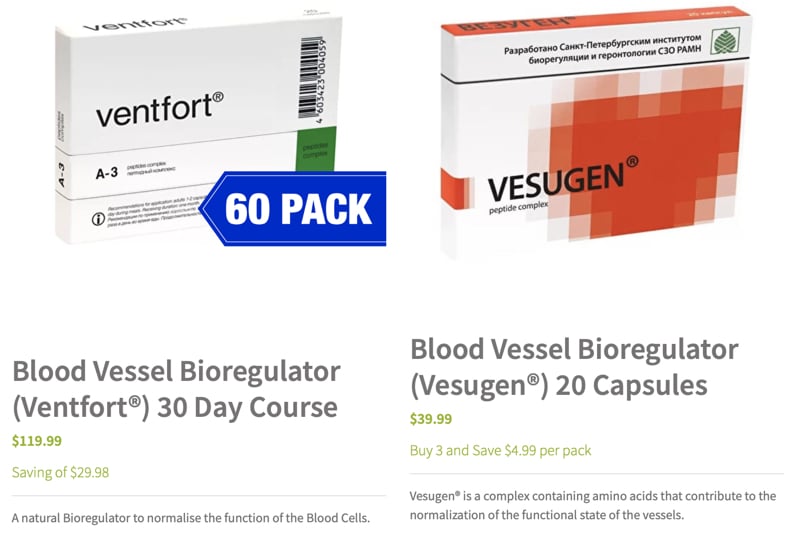
I AM proud to officially announce that you can now buy the world’s most authentic and highest-quality peptide bioregulators from International Antiaging System’s (IAS) store Profound Health.
They are selling both Ventfort and Vestugen alongside many others I have yet to even hear of or use.
Use code JAY15 to get 15% off your order!
Not only does Profound Health ship internationally, but the parent company IAS has been around since 1991 and they’ve been selling unique regenerative products you won’t find anywhere else.
Combined with over 1000 pages of published clinical data and numerous articles, they are your one-and-stop for anything and everything related to peptide bioregulators.
Conclusion: Blood Flow Reigns Supreme

With what you now know about the bioregulator peptide Ventfort, there’s no excuse to NOT prioritize blood flow as part of your regimen for fully optimized health.
It is connected to every single fitness goal we strive to achieve as young adults and every marker of vitality we want to keep when 30 more years pass us by.
Where blood flow goes, energy flows.
But rest assured this is just the very beginning – there are many more peptide bioregulators to write about and even more shocking things to discover about how the broken healthcare system keeps intel like this away from high-conscious people.
Be on the lookout over the coming weeks as we begin to drill down further investigating bioregulators and how they optimize various human biological systems.
As always…
Raise Your Vibration To Optimize Your Love Creation!
PS – To stay updated on my newest findings within the peptide bioregulator space, along with hidden health breakthroughs myself and Phil Micans will NEVER share publicly, join The Fully Optimized Health Private Membership Group.
It’s your greatest opportunity to fully optimize your health and gain total access to me and my network of high-level men and women living their highest and best life.

